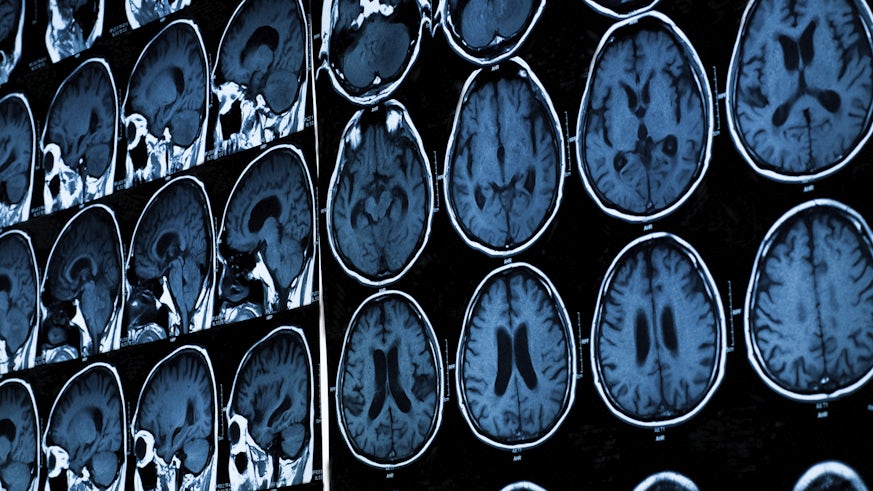Alzheimer’s study probes chemistry of the brain
10 December 2015

State-of-the-art simulations will investigate the cause and potential prevention of plaque build-up in the brain
Experts at the University are using state-of-the-art computer simulations to study the fundamental chemistry underpinning the development of Alzheimer’s disease.
Dr Jamie Platts, from the School of Chemistry, has been awarded a major research grant to investigate the build-up of ‘sticky’ plaques in the brain, which are believed to contribute to the degradation of nerve cells in the brain and the subsequent symptoms of Alzheimer’s disease.
The £350,000 awarded by the Engineering and Physical Sciences Research Council (EPSRC) will be used to perform computer simulations to determine how the plaque builds up, with the hope of informing the design of new drugs and diagnostic agents for the disease.
Dr Platts will specifically investigate the interaction between the building blocks of the plaque, called amyloid-β peptides, and naturally occurring metals in the brain.
Metals such as copper, zinc and iron are essential to life and form an important part of healthy brains.
However, research has shown that copper in particular plays a key role in the formation of amyloid-β plaques and the onset of Alzheimer’s. The reason why this happens still remains a mystery.
The three-year study will investigate how these metals interact with the amyloid-β peptides, on the scale of a handful to many thousands of atoms. Similarly, Dr Platts will also explore how non-essential metals, most notably platinum, can bind to atoms within the amyloid-b structure that would normally interact with copper or zinc. Experimental results have already shown that there is potential for non-essential metals to inhibit the formation of plaques.
Dr Platts said: “Computer models are used in all walks of modern life, and computer-aided molecular design plays a vital role in the discovery of new drugs and materials. In this research, new methods to simulate metal-amyloid interactions will be developed and tested, leading to a new insight into these important bio-molecules.
“This funding will give new insights into the crucial process of amyloid aggregation, and allow us to generate new hypotheses for the design of drugs or diagnostic agents to tackle Alzheimer’s disease. It is certainly early days, but this could be a promising strategy for the therapeutic treatment of Alzheimer’s.”
Professor Philip Nelson, Chief Executive of the Engineering and Physical Sciences Research Council, said: “Alzheimer's is a complex disease that has devastating effects on those with the condition and those caring for them, and with an aging population it is a growing challenge for our healthcare system. This early stage computational research will play a key part in understanding the underlying chemistry which leads to the onset of Alzheimer’s. It is hoped that this may contribute to our understanding of the disease and help development of future treatments.”
It is estimated that there are around 850,000 people living with dementia in the UK. Around 60,000 deaths a year are attributable to the disease, and it is estimated that the disease costs the UK £26 billion each year.
Dr Simon Ridley, Director of Research at Alzheimer’s Research UK, the UK’s leading dementia research charity, welcomed the new EPSRC funding. He said: “Alzheimer’s is a very complex disease and finding solutions requires a multi-disciplinary approach. It’s promising to see cutting edge computer technology being used to understand the molecular mechanisms behind Alzheimer’s, and ultimately to inform future studies to design new treatments. For many years, research into Alzheimer’s and other dementias has been underfunded compared to the huge impact it has on society. We welcome this investment by the EPSRC and must ensure long-term and high level investment in research if we are to change the lives of people with this devastating disease.”